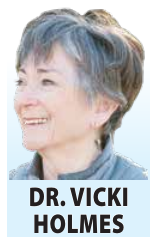
In 2018, an international organization found that 67 per cent of medical errors were the result of miscommunication. Another study from the U.S. showed that 1/3 of people with chronic illnesses underused medications because of cost and did not inform their caregivers. Half of people leaving hospitals could not identify their diagnoses or names of the medications they were given. How many of you have not understood directions when leaving hospital or a doctor’s office?
THE MEDICAL INTERVIEW
Two thirds of diagnoses can be made from medical history alone, making it essential for this initial interview to be done properly. Being physically in the office of a familiar physician, where trust and safety have already been established, is the setting where a productive interview is most likely to be successful. It has been well documented that people are allowed to tell the story of their illness uninterrupted and will be less likely to forget things that they consider to be important. They will also feel that they have been heard. Unfortunately, physicians, anxious to get the whole story, may interrupt to get more depth of information, thereby breaking the flow of the story and missing some elements. However, if the physician has been provided with advance information, the patient is more likely to feel understood.
Why would a patient not provide appropriate information to better inform their caregiver? Sometimes they feel intimidated, believing they won’t be heard. They may not understand what information is important, or they may have a language barrier. During COVID, a family member who is deaf but reads lips, was stymied by the doctor’s refusal to remove his mask so she could see his lips.
Other factors such as being in a tense situation with lack of privacy, such as in a busy ER, may interfere. COVID has led to the use of virtual medicine. While I have not provided this level of care personally, I know that I relied on a lot more than just voice to assess what was happening with my patients; I saw body language, looks of fear or desperation, looks of annoyance or anger, the presence of a tear. Collectively, that gave me much more information than words. Once a diagnosis is made, the physician must provide understandable information about the disease and the treatment plan. Providing written directions will avoid misinterpretation. If people understand the nature of their disease, it allows them the opportunity to strategize ways that they can prevent or treat disease and helps them plan for their future. It can increase trust and encourage them to follow a treatment plan.
PERSONAL INFORMATION
The availability of personal information on MySaskHealth (www. ehealthsask.ca) has been very valuable in timely access to results. However, often a discussion with a trained individual is essential to truly understand the significance of the reports. For this reason, it is critical that front-line office staff are well-trained to establish effective communication with patients. They are the filters who decide what information is classified as urgent, and they play a vital role in maintaining the chain of communication.
THE HOSPITAL EXPERIENCE
A lot of thought has been given to address communication in hospitals. Quality and safety are the responsibility of all the professionals involved in care. Interdisciplinary communication needs to be clear and concise, with openness and accountability being key. Lack of coordination can result in time lost and unnecessarily repeating tests. Risk aversion practices need to be clearly stated. In complicated cases, there may be too many experts, with varying opinions. The most responsible physician needs to correlate care and communicate this to the patients. Often this is left to residents who may lack experience to do this effectively. I long for the good ol’ days when family physicians played an active role in hospital care by coordinating and advocating for their patients. It is so important for family physicians to be informed of what goes on in the tertiary centres, because they are the ones patients will come to with questions about their care. Since the added stress of COVID, doctors have been stretched by having too much responsibility, lack of sleep and self-care. This, too, can interfere with the time and patience they are able to give.
What can you do to improve communication? Prepare for your visit. Try to remember the onset of your symptoms, details about such things as where you may be experiencing pain and the nature of it — sharp, dull, episodic, things that bring it on. Try to recall history of similar experiences in your own history or family history. Be concise, and truthful about your symptoms. (Avoid embellishment or denial!) If this is complicated, ask for extra time when you book your appointment. Be sure that you understand what your doctor has told you. Try to repeat instructions to the doctor to confirm that you understand. If you are referred to someone, write down their names. Write down the diagnosis, so you can do some exploring yourself. If it is a chronic disease, ask for organizations that may be good sources of information. Communication can be complicated; we all need to work on making it a successful experience.
Dr. Vicki Holmes is a Saskatoon retired family physician who has a special interest in Palliative Care and Women’s Health. She is passionate about sharing medical information with the public! (Vicki’s Photo: Memories by Mandy)
-Dr Vicki Holmes

Leave a Reply